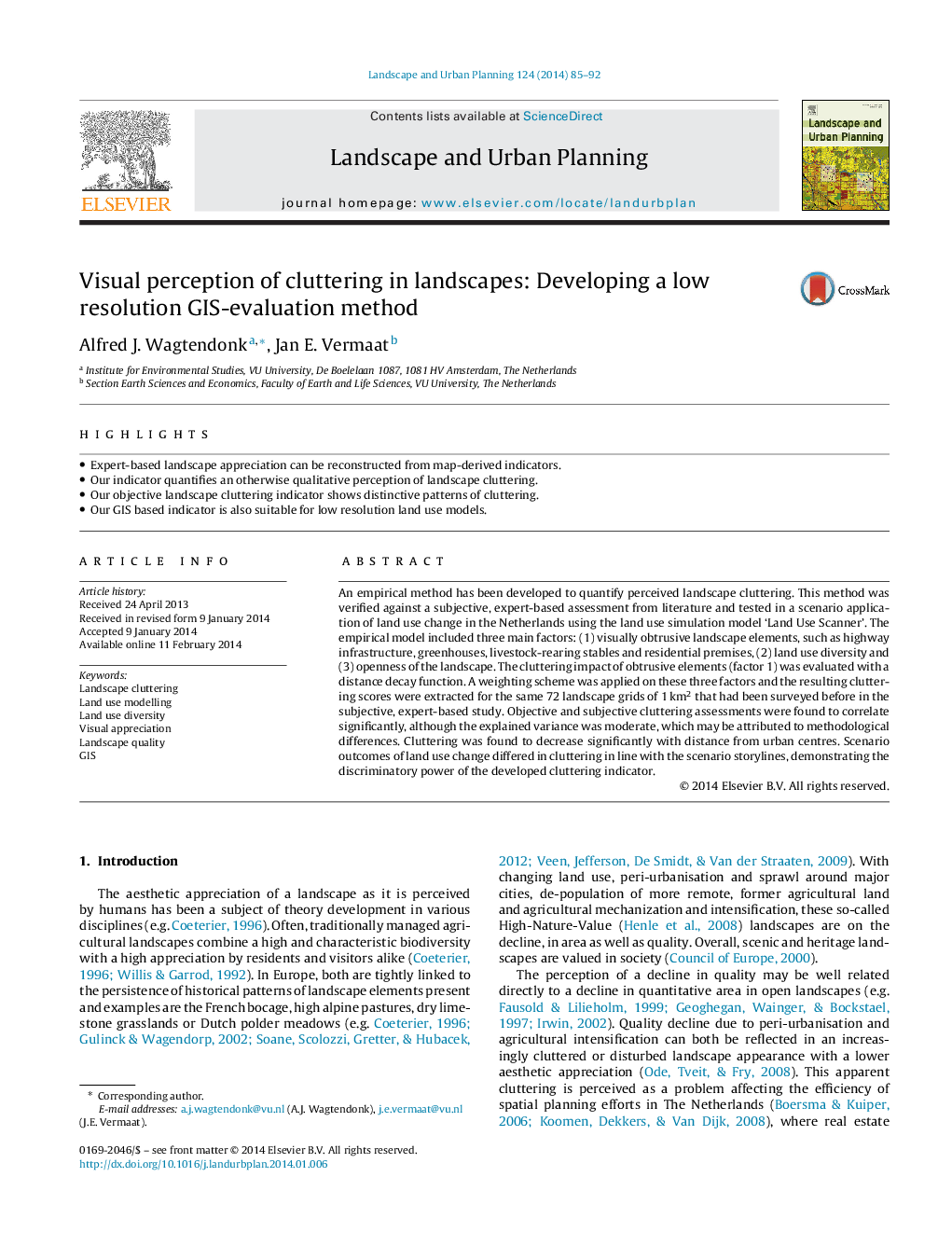| Article ID | Journal | Published Year | Pages | File Type |
|---|---|---|---|---|
| 1049314 | Landscape and Urban Planning | 2014 | 8 Pages |
•Expert-based landscape appreciation can be reconstructed from map-derived indicators.•Our indicator quantifies an otherwise qualitative perception of landscape cluttering.•Our objective landscape cluttering indicator shows distinctive patterns of cluttering.•Our GIS based indicator is also suitable for low resolution land use models.
An empirical method has been developed to quantify perceived landscape cluttering. This method was verified against a subjective, expert-based assessment from literature and tested in a scenario application of land use change in the Netherlands using the land use simulation model ‘Land Use Scanner’. The empirical model included three main factors: (1) visually obtrusive landscape elements, such as highway infrastructure, greenhouses, livestock-rearing stables and residential premises, (2) land use diversity and (3) openness of the landscape. The cluttering impact of obtrusive elements (factor 1) was evaluated with a distance decay function. A weighting scheme was applied on these three factors and the resulting cluttering scores were extracted for the same 72 landscape grids of 1 km2 that had been surveyed before in the subjective, expert-based study. Objective and subjective cluttering assessments were found to correlate significantly, although the explained variance was moderate, which may be attributed to methodological differences. Cluttering was found to decrease significantly with distance from urban centres. Scenario outcomes of land use change differed in cluttering in line with the scenario storylines, demonstrating the discriminatory power of the developed cluttering indicator.
